Glaciers have always fascinated me and I've planned many a trip and hike to see glaciers and the landscapes they have formed. As we moved further north along the coast of Baffin Island, we were treated to the sight of many glaciers.
GlacierA mass of ice that persists for many years and notably deforms and flows under the influence of gravity. Primer
Here is a quick introduction into glaciers.
Glacial Formation
Here is an explanation of how glaciers form. It was included in the "Flakes, Blobs, and Bubbles" Lesson created by Polar Educators International for Polar Week held in September 2012.
"Glaciers and ice sheets form as snow accumulates. As overlying snow accumulates, the pressure increases, weighing down the underlying snow. This creates a layer of dense snow, called firn. Eventually the firn gets further compacted and develops into solid ice. As the process occurs, air between the snow grains gets trapped. This air, once preserved in the ice, can be sampled to learn about the composition of past atmospheres. Scientists, who study ice cores, use these trapped-gases to understand how concentrations of greenhouse gases like CO2 and CH4 (methane) have varied over time." (Authors: Dan Zwartz and Heidi Roop, Antarctic Research Centre, Victoria University of Wellington, New Zealand) You can learn more about ice core drilling at the West Antarctic Ice Sheet by reading Heidi Roop's Blog.
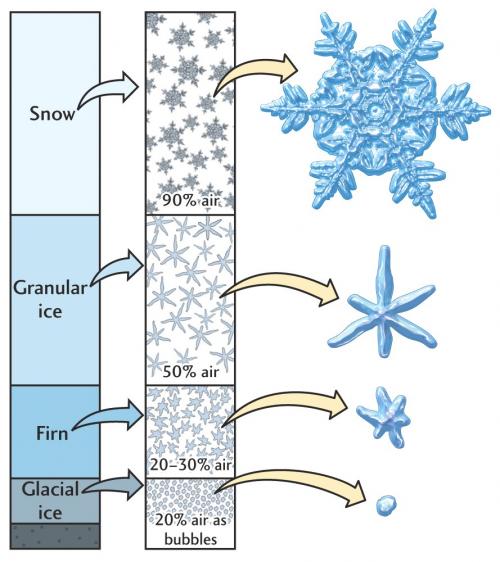
Glacial Definitions
Moraines - As a glacier moves it carries debris along with it. A moraine is that material usually made up of rocks, boulders, sand and silt.
Terminal Moraine - Debris left at the bottom end of the glacier
Lateral Moraine - Debris deposited along the sides of the glacier
Medial Moraine - Debris deposited between glaciers coming from two different valleys as they merge into one
Glacial Till - Debris that consists of a great deal of unsorted smaller rocks and gravel
Buchan Gulf and Icy Inlet Hike - Day 6 August 16, 2013
Here are some photos from our Day in Buchan Gulf and Icy Inlet. We were treated to many glaciers and a hike in Icy Inlet where we could see meltwater from a glacier and the glacial moraines.
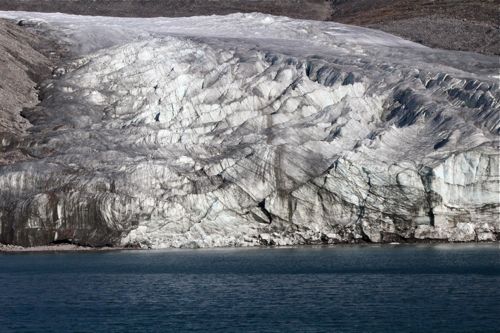
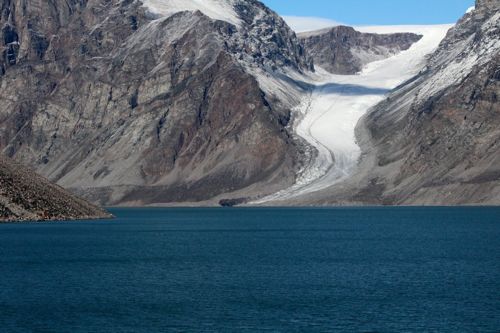
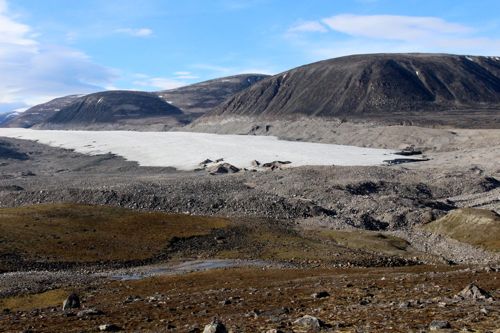
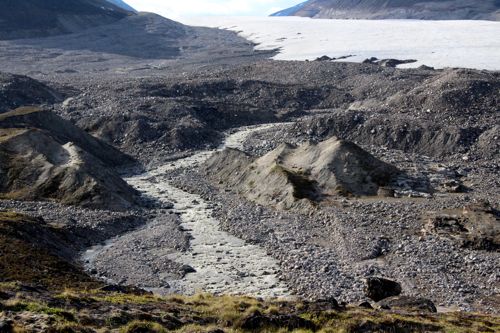
Water and Glaciers
Freshwater comprises only 3% of the water on the Earth. Mountain glaciers are an important source of fresh water across the globe. These glaciers are often referred to as the Third Polar Region in the world. Icecaps and glaciers make up 68.7% of the freshwater on the Earth. As the global temperature increases many of the mountain glaciers are melting at an increasing rate threatening the security of this water supply. The Greenland and Antarctic ice sheets are also changing. Glacial ice that feeds into the ocean has the potential to increase sea levels.
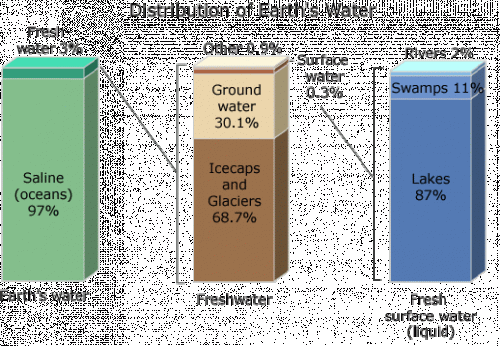
Greenland Visitor: An Ice Island from Petermann GlacierA mass of ice that persists for many years and notably deforms and flows under the influence of gravity. - Day 5 August 15, 2013
The ship passed by a 3.7-kilometer-long ice island currently anchored in the water off of Cape Raper on the afternoon of August 15, 2013. This ice island was created from a calving event on July 16, 2012 of the Petermann GlacierA mass of ice that persists for many years and notably deforms and flows under the influence of gravity. in Greenland. Here are a couple of satellite images of the event.
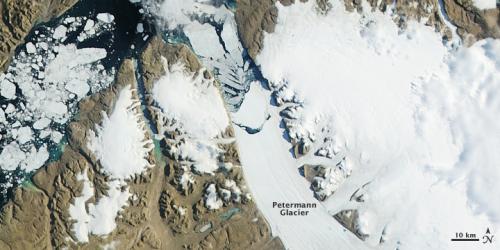
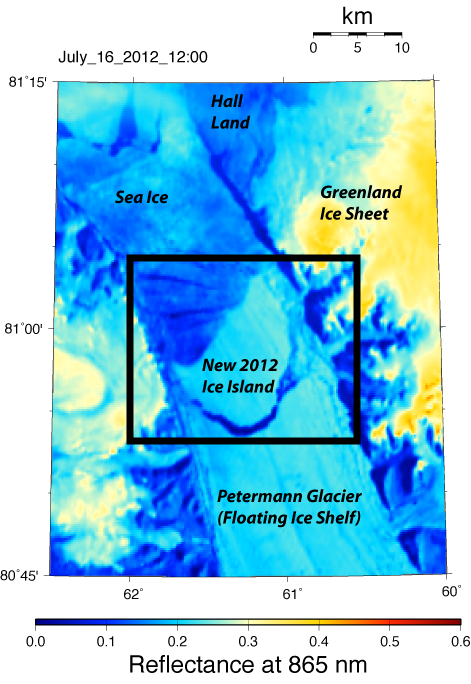
Here is a map that shows an estimated path for the journey of the ice island. It has traveled approximately 750 nautical miles since it left Petermann GlacierA mass of ice that persists for many years and notably deforms and flows under the influence of gravity. July 16, 2012 to create the Ice Island we saw off of Cape Raper in Baffin Island on 8-15-13.
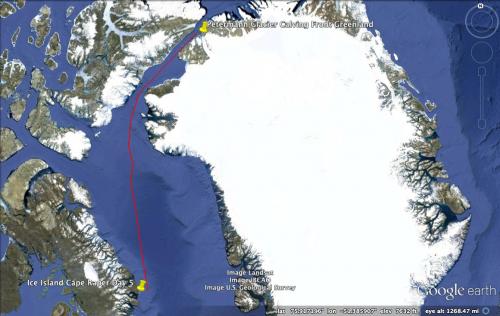
Dark blue streaks seen in the ice are intrusions, similar to geologic intrusions in a rock. The melt streams on the surface of the ice island refreeze into a dense, bubble-free ice.
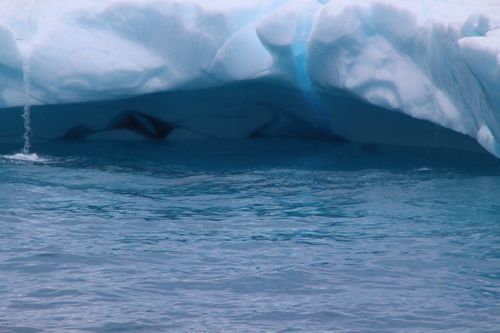
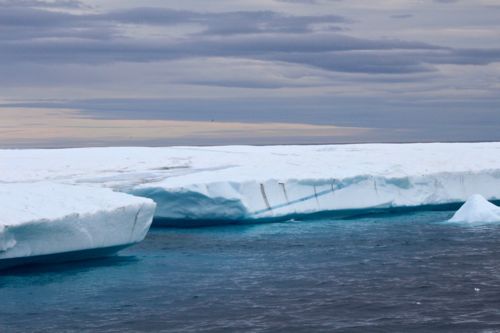
Greenland Mega-Canyon Discovered
A recent story in the news talked about the discovery of a mega-canyon underneath the Greenland ice sheet. It extends for 460 miles and the mouth of the canyon lies under the Petermann GlacierA mass of ice that persists for many years and notably deforms and flows under the influence of gravity. where it meets the sea. It is about twice the length of the Grand Canyon, twice as wide in most places, but only half as deep. Like the Grand Canyon it appears to be formed by a river long before an ice sheet existed in Greenland. Scientist, Jonathan Bamber from the University of Bristol, discovered this canyon by analyzing an incredible amount of data collected by research airplanes that have been flying over Greenland for the past 40 years.

http://youtu.be/ENg9Hci9y3M


Comments